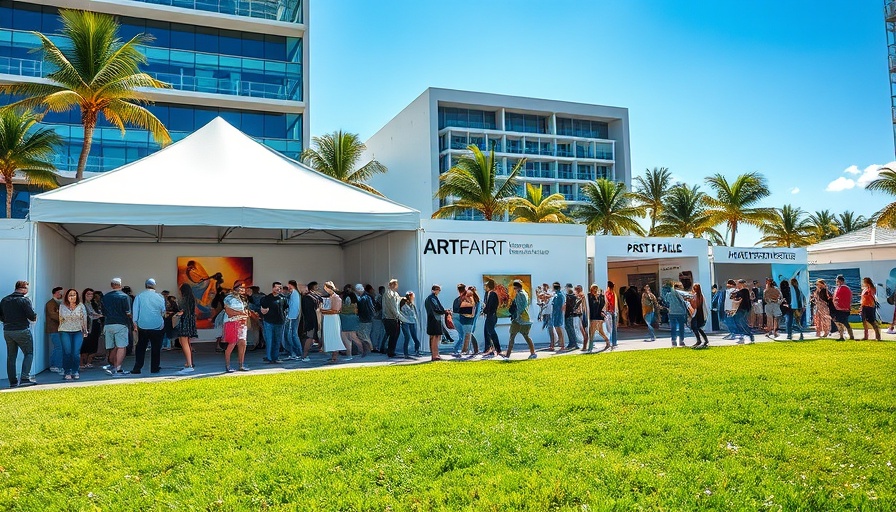
Tariff Impact: A New Era for Art Transactions
As the new tariffs imposed by President Trump take effect, the art world braces itself for significant changes. Widespread import taxes of 25% on items from Canada and Mexico, along with a 10% surcharge on imports from China, have sent ripples of concern across the industry. Gallerists and art professionals are now tasked with grasping the complexities of these regulations and exploring how they will impact future transactions and collaborations.
Understanding the Tariff Landscape
The newly implemented tariffs mean that the cost of acquiring and transporting art has escalated dramatically, with longtime duty-free arrangements now a thing of the past. Professionals like Francis Petit, director at Gander & White New York, highlight the hesitance surrounding purchasing decisions, stating, 'It’s not gonna be very conducive to sales.' With Canadian and Mexican currencies also showing weakness against the U.S. dollar, prices for artworks displaying these strains are poised to alter the market landscape dramatically.
Counter Measures From An Impacted Market
In response to these tariffs, many artists, galleries, and institutions are shifting their focus. The Art Gallery of Ontario, for example, made proactive purchases amounting to $1 million before tariffs took effect. They recognized the importance of maintaining a robust collection while addressing future challenges. The broader impact is evident, with potential shifts towards promoting local artists as the art market adapts to newfound limitations on international art exchanges and acquisitions.
Marketplace Adjustments: A Shift in Strategy
As the art sector recalibrates amidst these changes, experts recommend diversifying sales channels to mitigate risks. Digital platforms, NFTs, and local markets are gaining traction, as artists and galleries seek to lessen their reliance on international sales. According to Matthew F. Erskine, the art market stands at an inflection point where proactive strategies can pull businesses through choppy waters.
The Bigger Picture: What It Means for Art Lovers
For top wage earners in Philadelphia, these tariff changes pose not just challenges but opportunities. The prospect of increased attention on local and regional art can lead to discoveries of unique works that celebrate the rich tapestry of the community. It’s important during such transitions that consumers embrace local markets, thus ensuring that artists retain their livelihoods while enriching Philadelphia's artistic landscape.
Encouraging Local Shifts in Sociocultural Dynamics
While navigating the increase in costs, art lovers are encouraged to invest in local artworks and support regional artists. By reducing dependency on foreign art markets, Philadelphians can help cultivate a thriving local art scene that fosters connection and community growth. As compelling new narratives emerge through local art, the market may find vitality in the intimate ties forged amidst these economic fluctuations.
Take Action: Embrace local art initiatives and support nearby galleries as the art world undergoes these changes. Your engagement not only nurtures creativity but also strengthens community bonds.
 Add Row
Add Row  Add
Add 




Write A Comment